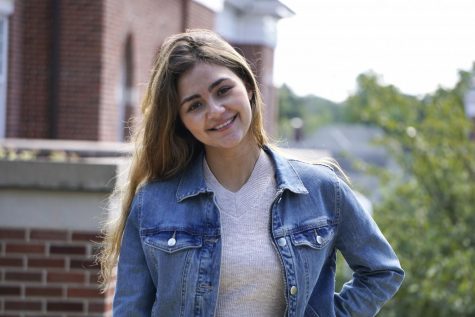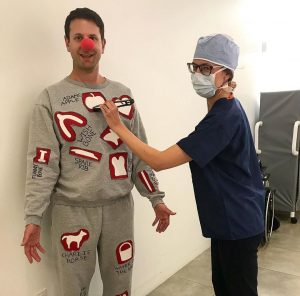Iona hosts Hudson Valley colleges for medieval, early modern literature symposium
February 28, 2019
The Iona English Department hosted the fifth annual Hudson Valley Medieval and Early Modern Undergraduate Symposium on Feb. 23.
Students from various colleges and universities presented their works ontopics in art, literature, religion, history and politics. The event was divided into five sessions that ran throughout the day.
The event began with a brief welcoming address from Dr. Christina M. Carlson, who introduced guests and thanked everyone who helped organize the symposium, which takes place at a college located in the Hudson Valley area every year.
“This is our fifth year doing this,” Carlson said, “Now that we’ve reached the fifth year, I’m happy to say that this is permanent.”
The first session was called “Women’s Work is Never Done” and focused on the role of women in literature, highlighting the cultural differences between men and women as presented in specific medieval and early modern works. Students from College of Mount St. Vincent, Fordham University and Mount Saint Mary College presented during this session.
“Religion, Art and Politics” was the second session, which offered the audience analyses on varying ideas in those three areas.
Iona sophomore Cassidy Iervasi gave the first presentation of this session. She read her paper, “I Want to Know What Love is: St. Paul and Dane’s Guide to Love,” and examined St. Paul’s definition of love as presented in his religious text “First Epistle to the Corinthians” and Dante’s definition of love as demonstrated in “The Inferno.”
“I remember writing this paper and being very stressed about it,” Iervasi said. “I wrote like five pages of a completely different idea before I got a new idea, erased everything and starting [sic] writing this paper.”
Iervasi has participated in multiple conferences and said that her favorite part about being a speaker was the opportunity to not only learn about her work and the works of others, but to engage with different opinions and ideas.
“I think the coolest thing is interacting with the audience and learning different perspectives,” she said. “It’s so interesting to see how other people see your work.”
Another speaker in this session was Arina Novak, a freshman at Marist College. Her presentation was titled “Why Do Contemporary Islamic Extremists Destroy Ancient Art?”
Novak’s presentation was centered on the idea of iconoclasm, the social belief that the destruction of icons or other monuments is essential for religious or political reasons.
Many of the speakers at the symposium were driven by a particular interest or passion that ultimately influenced their work. Novak said that her topic was motivated by her passion for art.
“I’m an aspiring art historian,” Novak said. “I’m very interested in art history, especially in the Middle East.”
Novak explained that she was introduced to the idea of iconoclasm by an art professor, who helped her decide to pursue and study this particular issue.
The third session, “Tweeting the Middle Ages: A Class Experiment,” was led by Iona College students studying Medieval Literature in ENG 402. They offered a contemporary view of medieval literature through the eyes of social media.
After this session two students from Marist College spoke in the fourth session, “Old English Poetry,” and offered insights into themes in poetry during this time period.
Dr. Jay Paul Gates, an associate professor in the English Department at John Jay College, gave the keynote address in the fifth and final session. His presentation, titled “Ethnic Violence, Genocide and Reading Early Medieval Sources,” wrapped up the symposium.
In each session, the speakers answered the audience’s questions about their work, which resulted in collaborative discussions and the exchange of different ideas and viewpoints.
Carlson says that there are several purposes for having this event available to students.
“We want to foster student scholarship and provide students [a] forum for presenting their work, and getting feedback in a supportive environment,” Carlson said. “We see it as a way to build relationships with colleagues at other schools so that we are creating a larger academic community for our students.”



